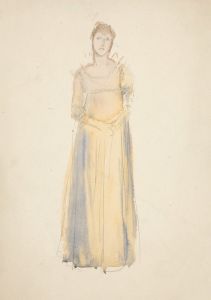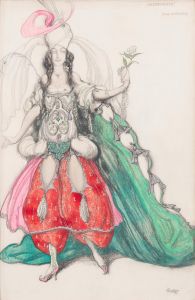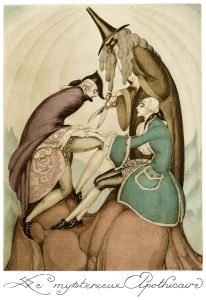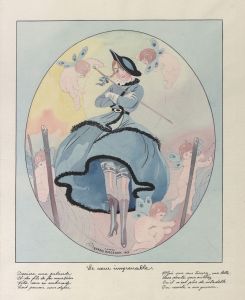
Sur talons rouges pl 01
A hand-painted replica of Gerda Wegener’s masterpiece Sur talons rouges pl 01, meticulously crafted by professional artists to capture the true essence of the original. Each piece is created with museum-quality canvas and rare mineral pigments, carefully painted by experienced artists with delicate brushstrokes and rich, layered colors to perfectly recreate the texture of the original artwork. Unlike machine-printed reproductions, this hand-painted version brings the painting to life, infused with the artist’s emotions and skill in every stroke. Whether for personal collection or home decoration, it instantly elevates the artistic atmosphere of any space.
Gerda Wegener (1886–1940) was a Danish painter and illustrator, known for her Art Deco style and depictions of fashionable women, often characterized by bold colors and sensual themes. One of her works, Sur talons rouges pl 01, reflects her signature style, blending elegance with a playful, provocative tone. The title, which translates to "On Red Heels," suggests a focus on femininity and glamour, themes that were central to Wegener's artistic output.
Wegener gained recognition for her portraits and illustrations, many of which featured her spouse, Lili Elbe, who was one of the first known recipients of gender-affirming surgery. Lili frequently served as Wegener's muse, appearing in numerous works that celebrated beauty, identity, and self-expression. While it is not definitively documented whether Sur talons rouges pl 01 specifically depicts Lili Elbe, the painting aligns with Wegener's broader exploration of gender and the fluidity of identity.
The painting showcases Wegener's mastery of detail and composition, with a focus on the subject's attire and posture. The use of red heels as a focal point emphasizes the allure and sophistication often associated with her work. Wegener's art was celebrated in Paris during the early 20th century, where she moved with Lili and became part of the vibrant artistic and cultural scene. Her works were exhibited in prestigious salons and gained popularity for their modern, fashionable aesthetic.
Despite her success in Paris, Wegener's work was less appreciated in her native Denmark, where conservative attitudes often clashed with her bold and unconventional themes. After Lili Elbe's death in 1931, Wegener's career and personal life faced significant challenges, and her later years were marked by financial difficulties. However, her contributions to art and her role in challenging societal norms have gained renewed attention in recent years.
Specific details about the creation date or context of Sur talons rouges pl 01 are not readily available, but the painting remains an example of Wegener's ability to capture the elegance and complexity of her subjects. Her work continues to be celebrated for its artistic merit and its role in exploring themes of gender, identity, and modernity.












